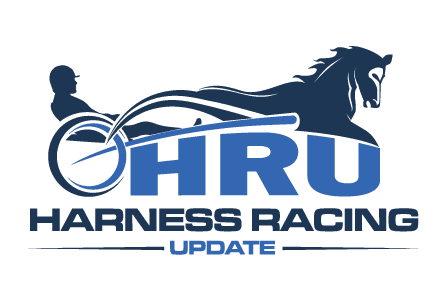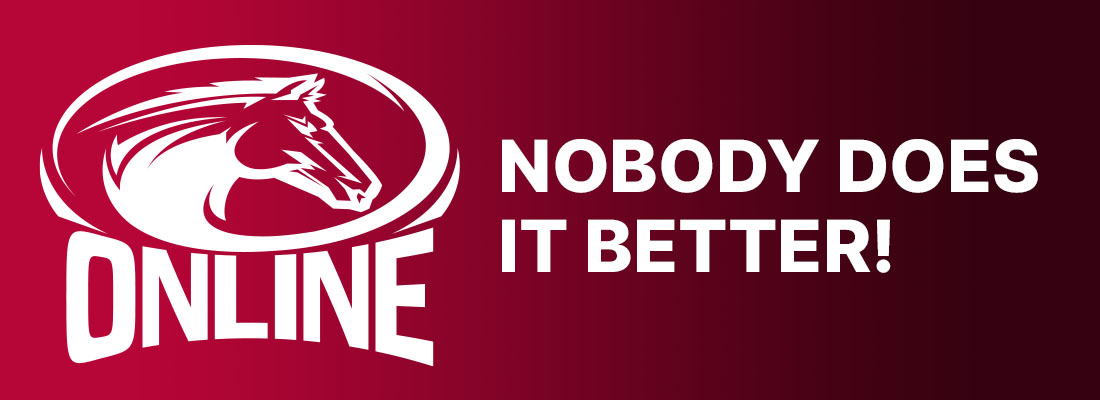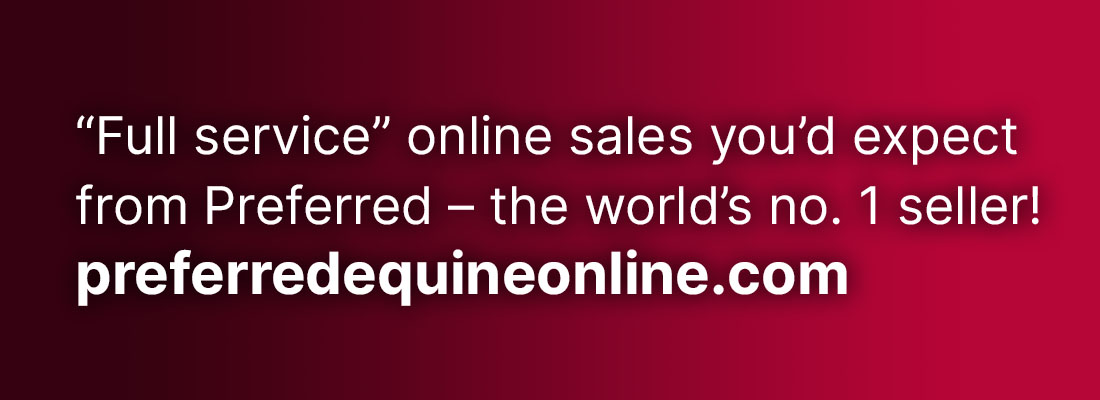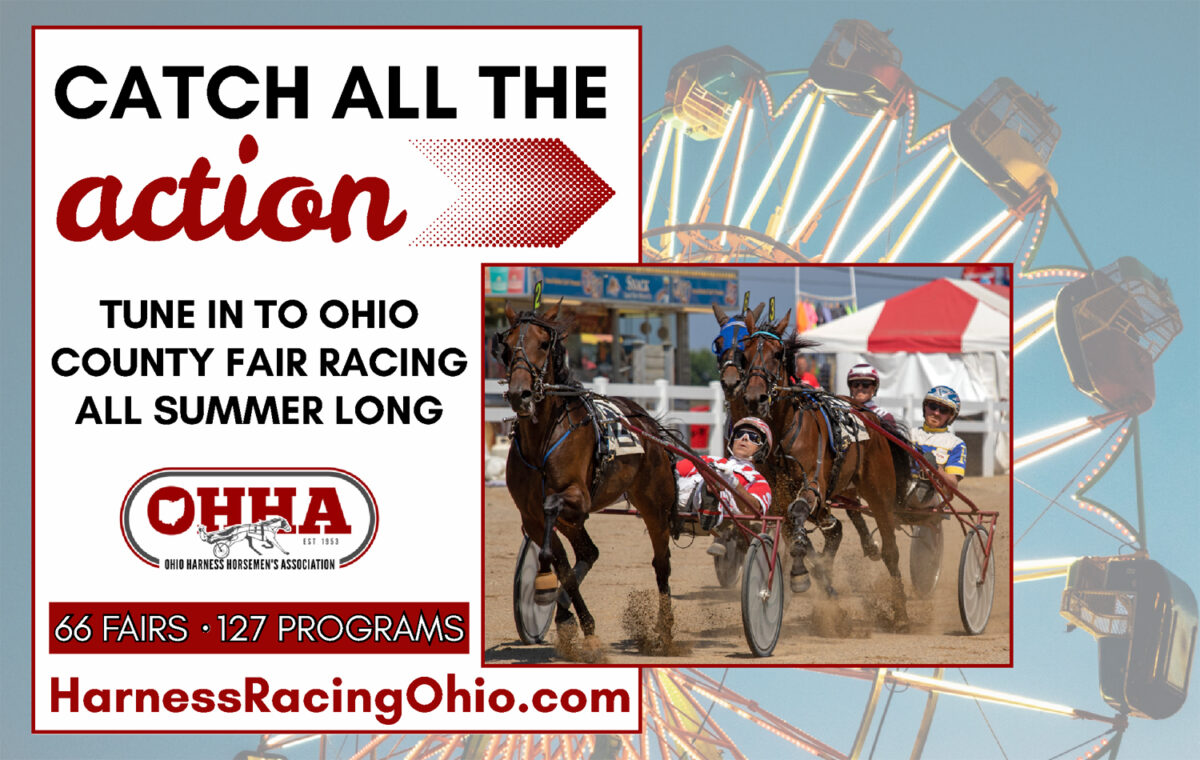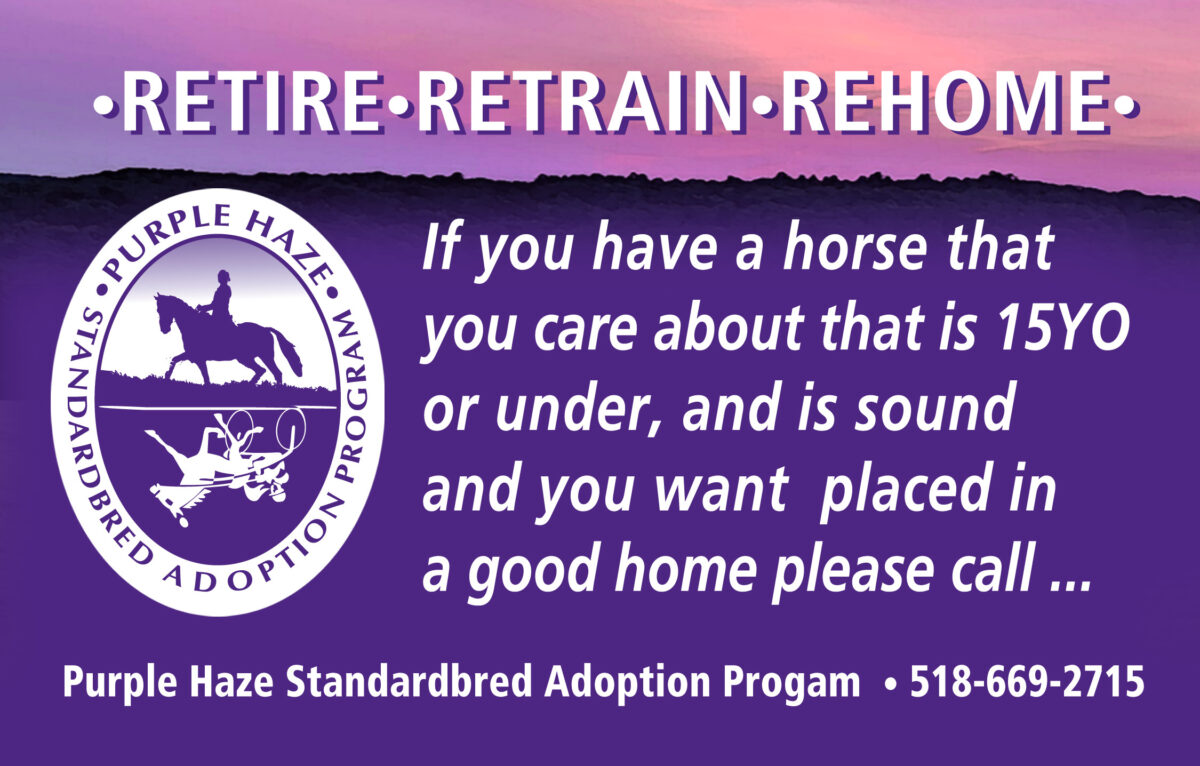Winbak’s Thomson is not your average Joe
by Murray Brown
If there is a single individual more involved in our sport than Hall of Famer Joe Thomson, I do not know that person. Just think of this:
Does he own a racetrack? Check. Thomson is part of the ownership group involved with The Red Mile, together with George Segal and the Antonacci family.
Does he own a sales company? Check. The ownership of The Red Mile is among the principals of the Lexington Selected Sales Company. He is also one of the owners of the Goshen Yearling Sale together with Mark Ford and Blue Chip Farms.
Does he own a breeding farm? Check. Not only one breeding farm, but together with his wife Joann, they own four of them in the states of Delaware, Mayland, New York and the province of Ontario.
Does he own a racing stable? Check. He and Joann have a significant number of horses in training and/or racing throughout the United States and Canada.
Let’s speak of those areas in which you are involved in the sport. First, your ownership in The Red Mile.
“The Red Mile, of which I already owned a part, was in danger of going under. Bill Perretti organized a group of prominent people in the sport to buy it and salvage our most historical and beloved showplace. I was invited to participate with the new group and very gladly did so.
“At first glance it appeared to be a white elephant or as some people were wont to say, a rich man’s toy. I didn’t look upon it as such. Would there be an immediate return on our investment? Most likely not. But we were buying an asset, an extremely valuable entity, especially from a historical perspective. But it was also so, because of its long-term real estate value. The Red Mile property was composed of 137 acres right in the middle of downtown Lexington. The purchase also included the venerable Tattersalls Sale.
“Since then, several things have happened, almost all of them good, which made our venture extremely fortuitous. We entered into an agreement with Keeneland, the big dog in Lexington and perhaps the biggest dog in the Commonwealth of Kentucky. In the beginning, our partnership involved only simulcasting. Since then, we have acquired the right to have historical racing machines at The Red Mile. This alone might have changed our enterprise from one bleeding money to one which puts us in the black.
“When we bought The Red Mile and Tattersalls, the sales company was at loggerheads with the rival Kentucky Standardbred Horse Sales Company. After a few years of fighting and feuding, sane heads prevailed and we jointly formed the Lexington Selected Yearling Sale, which almost immediately became the number one yearling sale in the world. Revenue from gaming, some might call it slots, has created the greatest impetus in breeding and racing in Kentucky, for both thoroughbreds and standardbreds that horse racing has ever seen. The status of Kentucky breeding and racing has grown to the point where it is unquestionably number one in the entire world. New racetracks were born. People have been buying and developing breeding farms. More livestock is being raised here than ever before. Purses have grown. Perhaps we are approaching a point where if you do not have a Kentucky eligible yearling you may become significantly hurt at the sales.”
We touched upon the sales company aspect and your involvement in it. Is there anything further you’d like to comment on?
“It is a prime example that shows where working together is more beneficial to an entity than fighting within an industry is. Prior to the formation of Lexington Selected, Tattersalls and Kentucky Standardbred fought about just about everything — dates, horses and consignors being the most prominent. Since the evolution of Lexington Selected, we have become bar none, the number one standardbred yearling sale in the world. Everyone benefitted from the merger, perhaps chief among them were our customers who could enjoy the Lexington experience in one great week of racing and sales instead of often having to choose their dates by picking between the two sales companies.”
You and your wife Joann own breeding farms in Delaware, Maryland, New York and Ontario. Not only do you own these farms, but some might say that you are the number one breeder in all these areas, if you are not number one you are certainly among the best. How did this all begin?
“If I were picking a single instance, one might say it started with a horse owner by the name of Red Douds. Mr. Douds and I happened to be sitting next to each other on a flight. We got to talking about horse racing, specifically harness racing. In the course of our conversation Red gave me some passes to the then flourishing Liberty Bell Park. I started going to the races and found that I really enjoyed them. I ended up buying a few horses and went to the sale at Harrisburg where I bought some more. At the time my partner in the financial services company in which I was involved was Ed Gold. Ed said that harness racing looked like great fun. He thought that he would like to also be a part of it. Together we started Whitehorse Farms. We went along with varying degrees of success for several years. Eventually the financial services company was sold to the great benefit of both Ed and I. Ed thought that Whitehorse had as large a presence in the business as he wanted. Perhaps he thought that we needed to “small down.” I felt differently.
“The decision was made to disperse all the Whitehorse holdings. The dispersal sale took place at Harrisburg. At about the same time the great thoroughbred farm Windfields came on the market. It was the home of the great, perhaps the greatest of all stallions Northern Dancer, who at one time stood at a fee of one million dollars. I might add, that with no live foal guarantee.
“Windfields, now Winbak Maryland became the hub of all our horse operations. Our Delaware Farm, which for all intents and purposes is a stallion station is close by. The mother farm covers around 2,500 acres and is the home to most of our mares (including about 75 retirees). It is also where we raise all of our yearlings under the supervision of Jimmy Ladwig, who has been with us for over 20 years.
“I would be remiss in not mentioning some of the other key members of our team which include, but are not limited to, our general manager Jack Burke, our racing manager and trainer Jeff Fout, the farm veterinarian Dr. Sarah Mackie, and her associate Becky Healey the broodmare manger and the managers of our Ontario farm Pat Woods and Noelle Duspiva in New York; our public relations and social media manager Elizabeth Lewis-House and a young man named Jose Cantaro who started with us as a part-time employee from Mexico. Since then, he has risen through the ranks as Jimmy Ladwig’s right hand man, to where he now is the foreman who oversees our farm employees. He is also our resident photographer.
“With regard to Mexico, I think that our farm would be nowhere without the government’s H2A program through which we annually bring a group of Mexican nationals who work on the farms from January through November. They return to Mexico each November and come back in January often bringing relatives and friends with them. They are extremely hard-working individuals who are usually excellent around the horses. Getting quality help is a constant problem throughout the business. This program has been a huge benefit to us.”
I have more than once said that of all the people I have known in the horse business, there is no one that enjoys a horse sale more than Joe Thomson. Would you agree with that assessment?
“Probably. I do love horse sales. I suppose most would say that I’m a people person. I’m also a horse person. I’m not sure which of the two I prefer. I guess it depends on the time and place. At a horse sale is where you get a confluence of people and horses. I love most everything about the sale. I love the anticipation leading up to them. I’m always proud of our offering. I love exposing our horses and I am extremely proud of the fruits of our labor and investment. In addition to selling yearlings, I also enjoy buying horses, most specifically broodmares and broodmares to be. At the mixed sale at Harrisburg, I station myself near the front where the bid spotters are always aware of my presence. I have no set formula when it comes to buying. I look for value. I want pedigree. I’m not opposed to buying an older mare of quality who may not have previously lived up to expectations.”
How many horses do you own?
“The simple answer would probably be too many. At the end of the breeding season adding up mares, yearlings, babies, racehorses, stallions, retirees and some other breeds, it almost certainly exceeds a thousand. I guess I’m just a horse junkie who enjoys being around horses and the people who care for them.”
Let’s talk about racing. How many horses do you have in training and racing?
“Again, it’s probably too many. I’m not sure of the exact number. They consist mostly of homebreds who I thought might not have brought what I believed to be a fair number at the sales. There are also those yearlings who may have been injured or were perhaps not in peak condition to have been offered in the sales. There are also those who a patron of the farm might have purchased and invited me in for a piece. I often will comply. We are fortunate in keeping the expenses down on the ones that we put into training by having our own training facility here on the farm and our own private trainer in Jeff Fout. What we usually do is we have Jeff break them and train them until they are ready to go to the races. We then send them to a few chosen trainers who race them.
“I see the lack of a viable middle market for yearlings as one of our greatest problems – at least from a breeder’s perspective. I believe that the chief cause of this is that it is so expensive to train a horse nowadays. Everything from feed, to equipment, to shoeing – just about everything involved in training a horse has gone up in price, yet the purses have not or at least have not risen commensurate to what it costs to train one. Don’t get me speaking about veterinarians and their bills! I’ve actually received invoices where the vet expenses exceed those of the rest of the training bill in its entirety. What’s the answer? I cannot say as I know. One thing that has happened which I view as probably a good thing for owners and maybe not so good for breeders, is more and more fractional ownerships. It’s good for the owners because it spreads the risk and the expense associated with training a horse. It probably hurts the breeder because it lessens the competition. Whereas before, you had multiple owners competing against each other in the sales ring. Now you have them pairing up, lessening the competition and subsequently the prices that the horses bring.”
